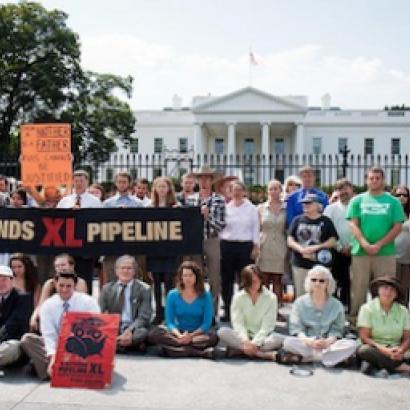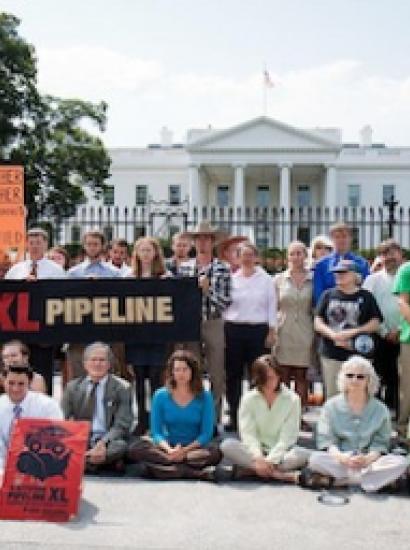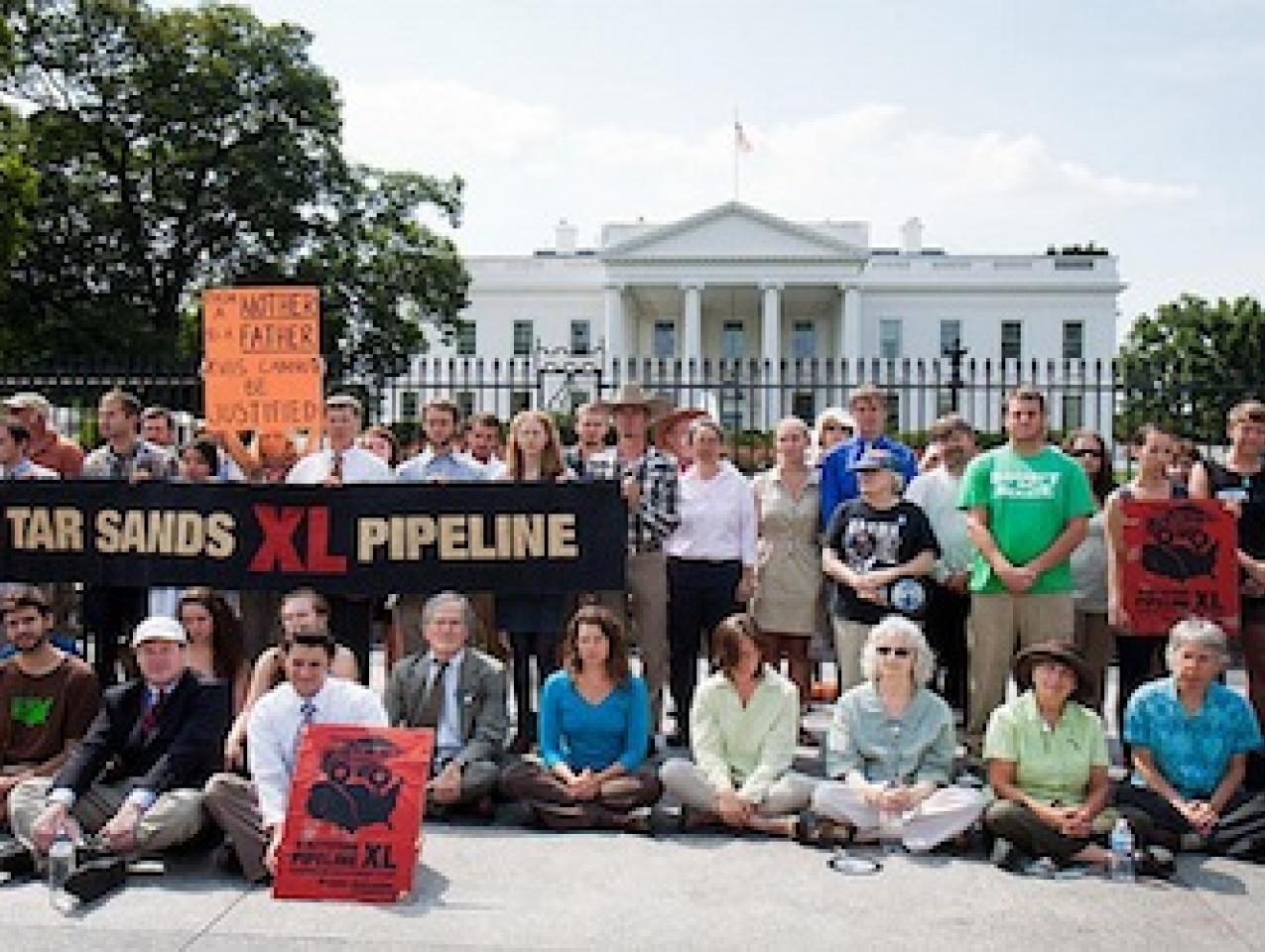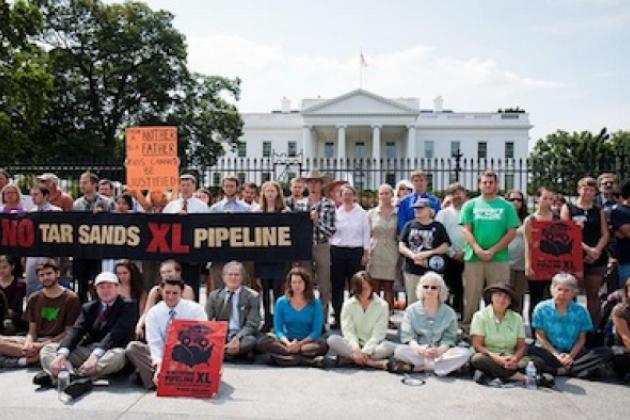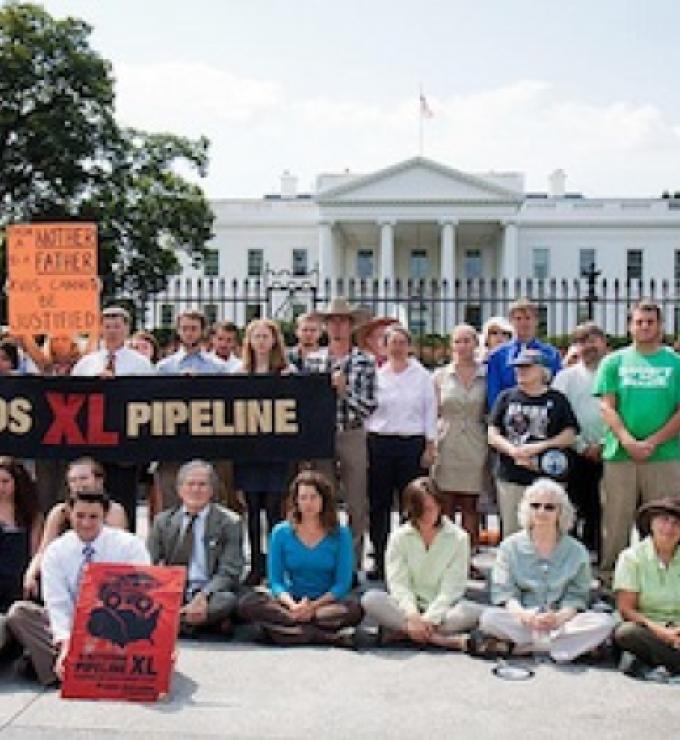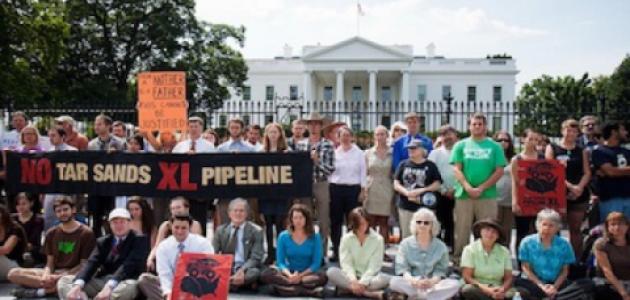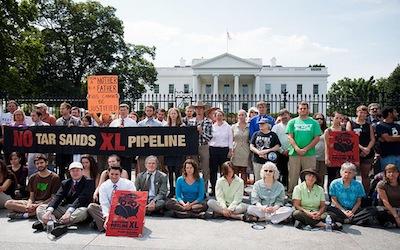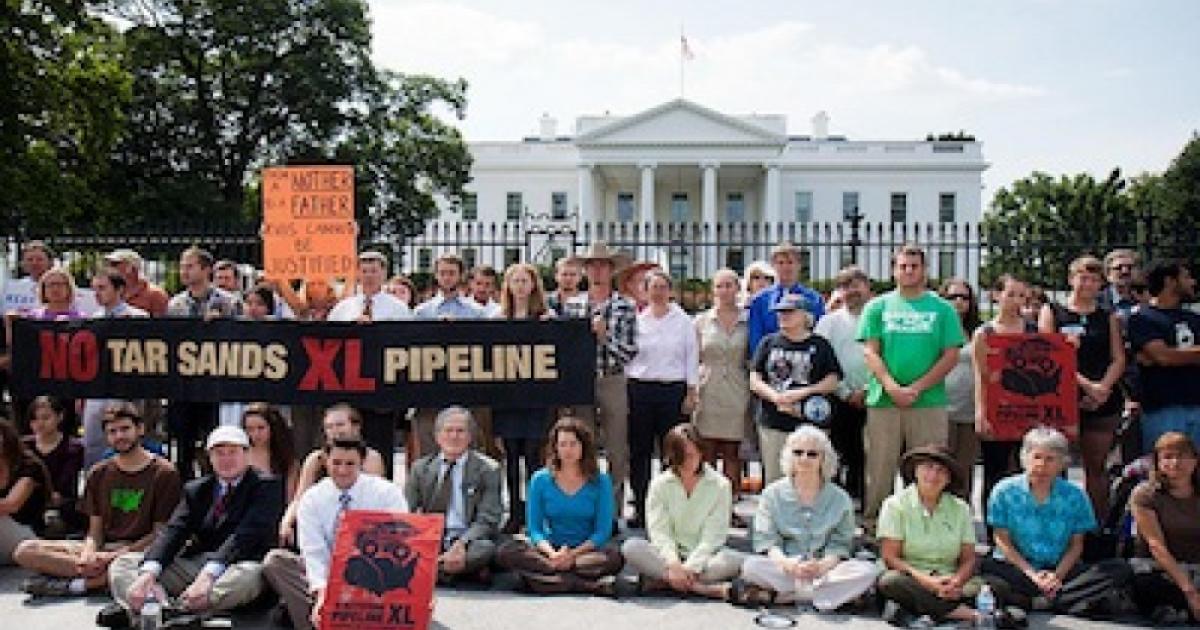- Law & Policy
- Regulation & Property Rights
The Nebraska Supreme Court has given a green light to the Keystone pipeline. As soon as construction of the pipeline can be completed, petroleum from Canada’s tar sands will be flowing to refineries on the U.S. gulf coast. The Nebraska court held that the public interest requires the Obama administration and Congress to give prompt approval to the controversial project.
The government’s lengthy delay of the project, said the court, violates the public’s common law rights. Noting that the project would create thousands of jobs, supply needed fuel for transportation and industry, and promote energy independence, the court held that “the failure of the President and Congress to move this important project forward is a clear violation of the public’s right to the wise and productive use of natural resources.” “The elected representatives of the people,” said the court, “have accepted a solemn public trust to promote the public good.”
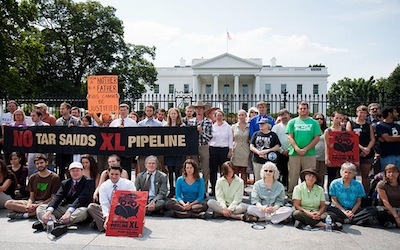
Photo credit: Talk Radio News Service
Just kidding. That would never happen. But change the story to one in which a court overturns legislative or executive approval of the Keystone pipeline as a violation of the public trust, and there is a good chance a court somewhere would turn fiction into fact.
Since the founding of the modern environmental movement in the 1960s, environmental advocates have looked to the courts for the advancement of their agendas, often by the simple expedient of costly delays. But increasingly the courts have become all too willing to craft policy rather than merely interpret law.
The temptations of power
A fundamental premise of American constitutionalism is that an independent judiciary stands guard against abuses of power by the other two branches of government. But independence leaves judges with immense power. Although the vast majority of judges at both the federal and state levels have genuine respect for the rule of law as a constraint on their power, it takes only a few self-important or ambitious judges to create precedents that other courts may later rely on in the name of the rule of law.
Some judges are easily tempted to engage in such law making. Putting aside political ambition and other personal conflicts of interest that are countered only by strength of character, all American judges have been trained in the centuries-old tradition of the common law. That tradition, it is often said, is one of judge-made law. Although a more accurate understanding is that the common law reflects judicial recognition and articulation of evolving popular custom and practice, there are many examples of policy-driven judicial modifications of common law rules, sufficient to persuade modern judges that they have law making power even in a constitutional system of separated powers.
Most present day judges have been encouraged in this view by armies of special interests advocates and a generation of law professors whose writings and teachings often emphasize the role of law as an instrument of change. Because most law teaching, even in an era of pervasive regulation pursuant to ever more complex statutes, relies on the reading and analysis of judicial opinions, courts are regularly portrayed as agents of change and students are encouraged to pursue policy objectives through imaginative interpretations of prior judicial rulings and existing laws and regulations.
More than a few judges find themselves persuaded that, as descendants of common law judges, they have an important role to play in updating and improving the law. Besides, making policy to serve the public good is far more interesting and gratifying work than interpreting and enforcing laws made by others. And if they have qualms about venturing into policy making, judges can have reference to higher authorities like Supreme Court Justice Stephen Breyer and 7th Circuit Judge Richard Posner whose books defend judicial lawmaking pursuant to theories of a “living constitution” and “judicial pragmatism” respectively.
Judges can all too easily fancy themselves philosopher kings with special talents for objectivity and doing the right thing in a world of uncompromising partisanship. Recent state court decisions in Pennsylvania, New York, and Montana bear witness to the fruits of environmentalist persistence in the courts and the concomitant threat to the rule of law.
A judicial coup in Pennsylvania
Just before Christmas of last year, the Pennsylvania Supreme Court found unconstitutional a state law setting statewide standards for shale gas drilling and explicitly prohibiting local zoning bans on the extraction technique called fracking. According to the court, the law (Act 13), passed in 2012 by Pennsylvania’s democratically elected general assembly, violated Article I, Section 27 of the state’s constitution.
That section, approved by voters in 1971, states that the people have a right to clean air, pure water, and the preservation of other environmental values, that the state’s “public natural resources are the common property of all the people including future generations,” and that the commonwealth is trustee for the conservation of these resources. The court concluded that Act 13 violates the people’s environmental rights and prevents Robinson Township and the other municipality plaintiffs from fulfilling their trust responsibilities.
These conclusions are both problematic unless you think that the courts are peculiarly suited to assessing the public good.
It is in the nature of representative democracy that the elected legislature is always balancing the many and varied interests of the people, in this case between jobs and a thriving economy on the one hand and environmental protection on the other. But the Pennsylvania court took it upon itself to rule that the legislature got the balance wrong.
While it is the role of the courts to enforce the people’s rights, the rights purportedly guaranteed in Section 27 are not of the same nature as the private rights recognized by the Pennsylvania and every other American constitution. Private rights function as trumps on the democracy. They establish limits on the scope of legislative authority. But it is a contradiction in terms to assert that public rights trump actions of the democratically elected legislature. Only the people themselves or their elected representatives can speak for the people, whether in the making of public policy or the assertion of public rights.
The key to the Pennsylvania court’s power grab lies in its linking of Section 27 to the common law public trust doctrine. That doctrine, long recognized as a guarantee of specific public rights in the use of navigable waters and their underlying lands, functions as a limit on all private rights in those lands and waters. But the Pennsylvania court says the trust now extends to all “resources that implicate the public interest.”
And what resources, one might reasonably ask, do not implicate the public interest? We will have to await further pronouncements from the Pennsylvania high court to know. But what we do know is that whatever public rights the court reveals will preempt every claim of private right and all conflicting actions of the political branches. That is the great power and appeal of the common law public trust doctrine.
Environmentalists across the country are ecstatic with the Pennsylvania court’s decision, as well they should be. The court has done in a big way what law professor Joseph Sax called for over 30 years ago in an article titled “Liberating the Public Trust Doctrine from Its Historical Shackles.” In fact, the Pennsylvania court has set the doctrine free, leaving courts in that state with almost unlimited power to override the democratically elected representatives of the people while ignoring the rule of law in the name of the rule of law. At the same time, environmentalists nationwide now have precedent from the high court of an important state inviting self-anointed representatives of the public interest to demand judicial intervention in the name of public rights whenever they fail to get what they want in the democratic process.
Judicial confusion in New York
Only a few days after the Pennsylvania Supreme Court decision, an acting trial court judge in New York ruled that an organic waste composting facility located in a Brooklyn public park constitutes a violation of the public trust doctrine. Putting aside the irony of environmentalists relying on a favored environment protection theory to ban an environmentally friendly composting facility, this case, too, will serve as grist for the environmentalist lawsuit mill.
The problem with the case is not that the judge got the law wrong. Indeed it appears from this outsider’s perspective that the judge was correct to hold that New York park lands are subject to a trust that forbids government trustees, in this case the City of New York, from diverting park lands to non-park uses without legislative authorization.
No, the problem with the case is that the judge claimed to be ruling pursuant to the public trust doctrine, although New York’s public parks trust doctrine has nothing to do with the common law public trust doctrine. Rather, the rule that public park lands are impressed with a trust prohibiting their alienation or use for non-park purposes appears to have two explanations.
First, there is the trust that citizens place in their governments to serve the public good, a trust that is enforced at the ballot box, not in the courts. Second, there is the reality that many park lands are first acquired from private owners by eminent domain. In those cases the trust status of the taken lands assures that they will be put only to public use as the constitutions of New York and the United States require.
As with the Pennsylvania decision, environmentalists have been quick to praise the New York court for providing a precedent that can be cited in the long struggle to unshackle the common law public trust doctrine from its confining watery roots.
Judicial cheek in Montana
Three years ago, the Montana Supreme Court decided that, notwithstanding over a century of precedent to the contrary, the State of Montana owned lands underlying several non-navigable stretches of three Montana rivers. Environmentalists were elated with the ruling because it gave the state control over tens of thousands of acres of submerged lands previously understood to be private property. With the state holding title to these lands, environmentalists could appeal to the aforementioned public trust doctrine as limiting the state’s discretion in their management and use.
The key factor in resolving whether submerged lands are property of the state or of the owners of adjacent uplands is whether the particular stretch in question was navigable at the time of statehood. Among the stretches held to be navigable by the Montana court is 17 miles of the Missouri River that include several waterfalls ranging in drop from 7 to 87 feet. It took Lewis and Clark a full month to portage around these falls. Yet the Montana court held those 17 miles to have been navigable at the time of statehood and therefore subject to public rights of use under the public trust doctrine, not to mention a source of revenue for the state in the form future and past rent from the defendant power company.
Because the Montana court had relied on the federal equal footing doctrine, the decision was appealed to the U.S. Supreme Court. In a unanimous ruling, the justices recognized the Montana action for the land grab it was. But that does not leave Montana environmentalists without judicial recourse in their efforts to bypass recalcitrant democratic processes in pursuit of their goals. Three decades ago the Montana Supreme Court issued two opinions that effectively extended the scope of the public trust doctrine from waters that are in fact navigable to virtually all waters of the state. Their method was much like that employed in the more recent Pennsylvania and New York decisions: Dust off an old common law doctrine, adapt it to modern circumstances and values, and reach a conclusion that overrides the democracy and ignores long vested private rights.
Endless potential for judicial mischief
Ever since Professor Sax called for liberating the public trust doctrine from its historical shackles, environmentalists have peppered state courts with public trust lawsuits. A recently published book by Oregon law professor Mary Wood calls for a renewed environmentalist effort to get state courts to resort to the public trust doctrine as a tool for circumventing the legislative and executive branches of government.
Wood has seemingly unlimited ambitions for the public trust doctrine, among them an “atmospheric trust” on the basis of which courts would command the political branches to take action on climate change. Wood does not shy away from asserting that it is the role of the courts to intervene when the executive and legislative branches fail to act. In an interview with the online magazine Yale Environment 360, Wood said, “the political branches of government are doing next to nothing to address this crisis . . . Where the two political branches are doing nothing, the public trust [doctrine] has its most forceful argument for judicial intervention.”
The public trust doctrine is not the only common law path identified by environmentalists seeking to bypass the political branches. Numerous lawsuits have been filed in state and federal courts claiming that climate change is a public nuisance and that courts should, therefore, enjoin private emitters of greenhouse gases and mandate action by government administrators and legislators. While the federal courts have rejected such claims under federal common law, environmentalists still have good reason to expect that a state court somewhere will find in their favor.
But notwithstanding their recent victories, environmentalists might want to reconsider their fascination with judicial governance. After all, not all judges share the environmentalist agenda. Indeed some may believe that the government has been standing in the way of the public good and would be willing to turn the fairy tale of a judicial order to commence the Keystone pipeline into a real world nightmare for environmentalists. For interests across the political spectrum, it is better to leave judging to the judges and policy making, however flawed, to the political branches of government.








